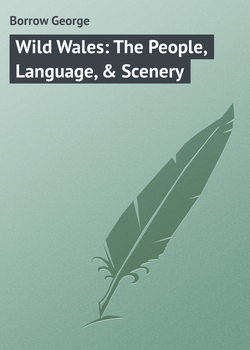Читать книгу Wild Wales: The People, Language, & Scenery - Borrow George - Страница 17
CHAPTER X
ОглавлениеThe Berwyn – Mountain Cottage – The Barber’s Pole.
On the following morning I strolled up the Berwyn on the south-west of the town, by a broad winding path, which was at first very steep, but by degrees became less so. When I had accomplished about three parts of the ascent I came to a place where the road, or path, divided into two. I took the one to the left, which seemingly led to the top of the mountain, and presently came to a cottage from which a dog rushed barking towards me; an old woman, however, coming to the door, called him back. I said a few words to her in Welsh, whereupon in broken English she asked me to enter the cottage and take a glass of milk. I went in and sat down on a chair which a sickly-looking young woman handed to me. I asked her in English who she was, but she made no answer, whereupon the old woman told me that she was her daughter and had no English. I then asked her in Welsh what was the matter with her; she replied that she had the cryd or ague. The old woman now brought me a glass of milk, and said in the Welsh language that she hoped that I should like it. What further conversation we had was in the Cambrian tongue. I asked the name of the dog, who was now fondling upon me, and was told that his name was Pharaoh. I inquired if they had any books, and was shown two, one a common Bible printed by the Bible Society, and the other a volume in which the Book of Prayer of the Church of England was bound up with the Bible, both printed at Oxford, about the middle of the last century. I found that both mother and daughter were Calvinistic Methodists. After a little further discourse I got up and gave the old woman twopence for the milk; she accepted it, but with great reluctance. I inquired whether by following the road I could get to the Pen y bryn or the top of the hill. They shook their heads and the young woman said that I could not, as the road presently took a turn and went down. I asked her how I could get to the top of the hill. “Which part of the top?” said she. “I’r gor-uchaf,” I replied. “That must be where the barber’s pole stands,” said she. “Why does the barber’s pole stand there?” said I. “A barber was hanged there a long time ago,” said she, “and the pole was placed to show the spot.” “Why was he hanged?” said I. “For murdering his wife,” said she. I asked her some questions about the murder, but the only information she could give me was, that it was a very bad murder and occurred a long time ago. I had observed the pole from our garden at Llangollen, but had concluded that it was a common flagstaff. I inquired the way to it. It was not visible from the cottage, but they gave me directions how to reach it. I bade them farewell, and in about a quarter of an hour reached the pole on the top of the hill. I imagined that I should have a glorious view of the vale of Llangollen from the spot where it stood; the view, however, did not answer my expectations. I returned to Llangollen by nearly the same way by which I had come.
The remainder of the day I spent entirely with my family, whom at their particular request I took in the evening to see Plas Newydd, once the villa of the two ladies of Llangollen. It lies on the farther side of the bridge, at a little distance from the back part of the church. There is a thoroughfare through the grounds, which are not extensive. Plas Newydd, or the New Place, is a small, gloomy mansion, with a curious dairy on the right-hand side, as you go up to it, and a remarkable stone pump. An old man whom we met in the grounds, and with whom I entered into conversation, said that he remembered the building of the house, and that the place where it now stands was called before its erection Pen y maes, or the head of the field.
